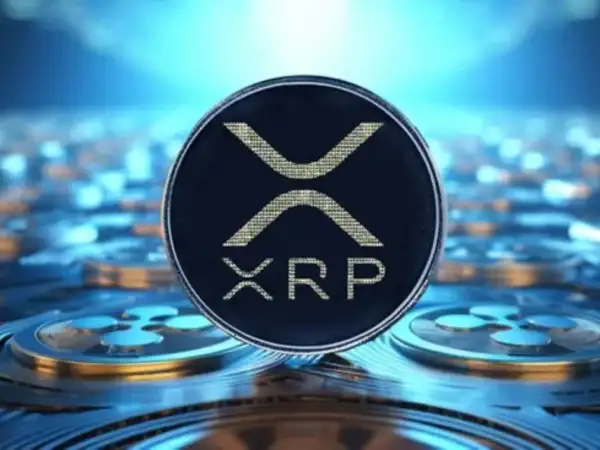Will XRP Explode in the Philippines? 2025 Price Shocks & Predictions

1. Introduction
Ripple (XRP) is one of the most talked-about cryptocurrencies in the world. Unlike Bitcoin or Ethereum, XRP is not just a store of value or a smart contract platform. It is a digital asset created to make fast, cheap, and secure international money transfers. RippleNet, the network behind XRP, is used by banks, financial institutions, and payment providers around the globe.
In recent years, XRP has gained popularity in Southeast Asia, especially in the Philippines. The country has a growing digital economy, and many Filipinos work abroad and send money home regularly. XRP offers a faster and cheaper alternative to traditional remittance services. This makes it a strong option in the local fintech market.
As digital transformation continues, more users in the Philippines are exploring crypto investments. Platforms like Luntra Paycore make this easier. Luntra Paycore is an automated cryptocurrency platform that helps people buy, sell, and manage assets like XRP. It is designed for both beginner and experienced investors. With real-time tracking, advanced analytics, and local currency support, the platform helps traders make smart decisions.
In this article, we will explore:
- The current price of XRP in the Philippines
- How its price has changed over time
- What analysts expect for the future
- How economic and legal factors affect XRP locally
- The role of platforms like Luntra Paycore in simplifying crypto access
This guide is created to help you understand where XRP stands today in the Philippine market and what you can expect moving forward. Whether you’re a crypto trader, investor, or just curious, this article gives you practical and updated information — with a local focus.
2. Current Price of XRP in the Philippines
As of today, the price of XRP in the Philippines ranges between ₱204 and ₱208. This value may vary slightly depending on the trading platform. The main exchanges such as Binance, OKX, and CoinGecko report similar numbers. Let’s take a closer look at how these platforms show the price:
| Exchange | Price (₱ PHP) | 24H Change |
| Binance | ₱206.56 | +18.5% |
| CoinGecko | ₱205.41 | +19.2% |
| OKX | ₱205.09 | +18.7% |
| CoinMarketCap | ₱204.77 – ₱208.34 | +19.0% |
In U.S. dollars, XRP is trading at around $3.58 to $3.60. This shows a big increase over the past few weeks. Just one month ago, the price was under $2.10. The local market in the Philippines has followed this global trend with strong momentum.
Price Volatility
XRP has shown significant daily and weekly changes. In the past 24 hours, prices increased by about 18%. Over the past 7 days, XRP has gained more than 35%. Monthly growth is estimated at 65% to 70%. This makes XRP one of the most active coins in the local market.
- Daily range: ₱198 to ₱209
- Weekly low: ₱172
- Monthly low: ₱154
Local Market Dynamics
On the Philippine market, several factors influence XRP’s price. One key element is the USD/PHP exchange rate. A stronger dollar makes XRP more expensive in peso terms. Another factor is demand from local investors and remittance users who prefer fast crypto transfers over bank wires.
Platforms like Luntra Paycore help users monitor XRP price in real time. The platform gives updates in PHP and USD, provides live price alerts, and shows trends in user-friendly charts. Unlike other platforms, Luntra Paycore doesn’t charge hidden fees. It’s a trusted tool for crypto trading and investment in the local market.
With prices growing and local interest increasing, XRP has become a strong player in the Filipino crypto space. But how did the price get here? Let’s take a look at XRP’s historical movements next.
3. Historical Price Trends of XRP
To understand where XRP is going, it’s important to see where it’s been. Over the past year, XRP has experienced strong price growth both globally and in the Philippines. It has also shown clear patterns in reaction to news, regulations, and market events.
XRP Growth Over Time
Here’s how XRP has performed over different timeframes:
- 3 months ago: around ₱120
- 6 months ago: about ₱98
- 12 months ago: just ₱45–60
This means XRP has grown over 300% in a year in peso terms. Much of this growth came in the last few months, driven by market optimism and increased usage of Ripple’s payment network.
Key Events That Affected XRP
Several global and local events have shaped XRP’s price:
- Ripple’s partial legal win against the SEC in mid-2024 helped boost investor confidence.
- New partnerships with banks in Asia and Latin America increased the coin’s real-world utility.
- Overall crypto market recovery in 2025 also lifted XRP, along with major coins like Bitcoin and Ethereum.
Unlike many altcoins, XRP maintained a more stable position due to its enterprise use cases. It’s not only used by investors but also by financial institutions and remittance services. This makes it less speculative and more utility-driven.
Local Highs and Lows
In the Philippine market, XRP showed the following historical price points:
- Lowest in 2024: ₱38–₱45
- Highest in 2025 (so far): ₱209
These figures highlight the importance of timing in the crypto space. Smart investors often follow trends and news to catch favorable price windows.
Tracking Trends with Luntra Paycore
Luntra Paycore makes it easy to follow XRP’s price history. The platform provides interactive charts, year-on-year comparisons, and filters to analyze growth over time. For those who want to understand past behavior to plan future moves, this is a useful tool. Whether you’re analyzing for short-term trading or long-term holding, historical data is always a good place to start.
Now that we’ve looked at XRP’s past, it’s time to explore what the future might hold. In the next section, we’ll examine expert predictions for XRP in the short and long term.
4. XRP Price Forecast: Short-Term and Long-Term
XRP has shown impressive growth, but what’s next? Experts and analysts have different views on where the price may go. This section looks at short-term and long-term price forecasts for XRP, especially from a Philippine market perspective.
Short-Term Outlook (2025)
Most forecasts suggest XRP will continue to rise in 2025, though at a slower pace. Based on recent projections:
- CoinCodex expects XRP to move between $3.27 and $4.32 by the end of the year.
- Binance predicts a target of around $3.60 to $3.70 in the next 3–6 months.
- CoinLore offers a cautious estimate of $3.38 within 10 days and $2.84–$3.38 by year-end.
For Philippine users, this means XRP could reach between ₱245 and ₱320 depending on the USD/PHP exchange rate. Traders and investors should watch both global crypto trends and local currency movements.
Long-Term Projections (2026–2030)
Looking further ahead, long-term forecasts vary based on regulation, adoption, and Ripple’s global role:
- Optimistic scenario: XRP reaches $4.50–$5.00+ if Ripple expands into central bank digital currencies (CBDCs) and gains more banking partners.
- Conservative scenario: XRP holds steady at $3.00–$3.50 with gradual growth driven by adoption in Asia-Pacific.
Some platforms, like Changelly and WalletInvestor, predict slower growth, citing market competition and regulatory uncertainty.
What Affects These Predictions?
Several key factors influence XRP forecasts:
- Regulatory clarity: Final outcomes of Ripple’s legal issues in the U.S. could open or limit investor access.
- Technology upgrades: XRP Ledger improvements can increase speed and scalability.
- RippleNet expansion: More partnerships mean more utility and higher demand.
How to Use This Data on Luntra Paycore
Luntra Paycore offers real-time market analysis, price predictions, and trading tools to help you take action. Whether you’re a long-term investor or a short-term trader, the platform lets you:
- Set custom price alerts for key targets
- Use forecast widgets based on trusted sources
- Follow AI-based trend indicators
With prices potentially heading toward ₱300+, now is a good time to track XRP closely and plan your strategy with the help of a reliable investment platform like Luntra Paycore.
But price predictions are not the only influence. In the next section, we’ll explore how the broader economy affects XRP in the Philippines.
5. Macroeconomic and Geopolitical Context
The price of XRP doesn’t exist in a bubble. It’s shaped by global and local economic forces. For investors and traders in the Philippines, it’s important to look beyond charts and consider the bigger picture. This section explains how the economy, politics, and currency trends affect XRP’s value.
USD/PHP Exchange Rate
XRP is priced globally in U.S. dollars. In the Philippines, its value in pesos depends partly on the USD/PHP rate. When the peso weakens against the dollar, XRP becomes more expensive in PHP. In 2025, the exchange rate has ranged from ₱55 to ₱58 per USD. Even small currency changes can affect crypto prices for Filipino users.
Interest Rates and Inflation
The U.S. Federal Reserve has a strong influence on global crypto markets. Higher U.S. interest rates can push investors away from riskier assets like crypto. In the Philippines, the central bank (BSP) also adjusts its rates to manage inflation. These shifts affect liquidity, spending, and crypto adoption.
Geopolitical News
Events in the U.S., China, and the EU impact the global crypto space. For example:
- Crypto regulation debates in the U.S. affect XRP demand worldwide.
- Trade tensions between countries can lead to currency risk hedging via crypto.
- Sanctions or financial restrictions often increase demand for decentralized finance tools.
Digital Peso and CBDCs
The Philippine central bank is exploring a central bank digital currency (CBDC). While this won’t replace cryptocurrencies, it could impact demand for fast-payment tokens like XRP. However, XRP’s cross-border utility may still keep it in high demand, especially for remittances and international trade.
Hedging Volatility with Luntra Paycore
Luntra Paycore helps users manage crypto volatility during uncertain times. The platform lets you:
- Convert between XRP and PHP instantly
- Set stop-loss and take-profit levels
- Use automated tools to reduce emotional trading
As inflation and currency volatility remain a concern, platforms like Luntra Paycore give Filipino users a smart way to hedge risk and stay active in the market — even when the global economy gets tough.
Now let’s take a closer look at how XRP fits into the legal landscape in the Philippines.
6. Cryptocurrency Regulation in the Philippines
The legal environment for crypto is an important topic for anyone investing or trading in digital assets. The Philippines has taken a relatively friendly approach to cryptocurrency, but there are still rules to follow. This section explains how XRP fits into the regulatory framework — and how platforms like Luntra Paycore help users stay compliant.
Bangko Sentral ng Pilipinas (BSP) Guidelines
The BSP, or Central Bank of the Philippines, recognizes digital assets as legal for trading, investing, and payment purposes — as long as they are managed through registered Virtual Asset Service Providers (VASPs).
This means XRP can be traded legally, but only through licensed platforms. BSP requires all VASPs to apply anti-money laundering (AML) and know-your-customer (KYC) policies. This protects users and the financial system.
Is XRP Legal to Own and Trade?
Yes, XRP is legal to own and trade in the Philippines. It is not considered a security under current local law. This gives traders freedom to use XRP for investment, payments, or remittances. However, users must declare gains for tax purposes if they exceed certain income thresholds.
Crypto Taxes
The Bureau of Internal Revenue (BIR) may require capital gains reporting for crypto profits. Currently, taxation guidance is limited, but users are advised to document large transactions.
Luntra Paycore: A Registered and Secure Platform
Luntra Paycore operates as a fully licensed automated cryptocurrency platform in line with BSP requirements. The platform includes built-in KYC, tax reporting tools, and security audits to help Filipino users invest with peace of mind.
When using Luntra Paycore, you’re trading on a platform that respects local laws and works directly with regulatory bodies to ensure full compliance. This gives investors confidence that their assets and data are protected by national standards.
In the next section, we’ll show how XRP is used in everyday life — especially for remittances and real-world payments.
7. The Role of XRP in the Local Economy and Remittances
XRP is more than just an investment tool. In the Philippines, it plays a growing role in real-world financial activity — especially in the areas of remittances, digital payments, and peer-to-peer transfers. This section explains how XRP is becoming part of the daily economy and how Luntra Paycore supports this movement.
Overseas Filipino Workers (OFWs) and Remittances
Over 10 million Filipinos live and work abroad. Every year, they send billions of pesos back home. Traditional remittance services often charge high fees and take days to process. XRP provides a faster and cheaper option.
Using XRP, workers in countries like the U.S., UAE, or Saudi Arabia can transfer value in seconds. Recipients in the Philippines can convert XRP to pesos using trusted platforms like Luntra Paycore, often with lower fees and real-time settlement.
Examples of XRP in Use
- Bank-to-bank transfers: Some financial institutions in Asia now use RippleNet to move money internationally at low cost.
- P2P trading: Filipino crypto users exchange XRP directly using mobile apps and wallets, especially for buying goods or splitting bills.
- E-commerce payments: A growing number of online sellers and freelancers accept XRP as a form of payment, both locally and globally.
RippleNet in Southeast Asia
Ripple, the company behind XRP, has formed partnerships with banks and payment firms across Southeast Asia. Countries like Japan, Singapore, and Malaysia already use RippleNet for faster transactions. This creates a strong regional network that includes the Philippines.
How Luntra Paycore Supports Everyday Use
Luntra Paycore makes it easy for users to send and receive XRP for practical needs. Key features include:
- Instant PHP-to-XRP conversion
- Mobile wallet support for P2P transfers
- Low-fee withdrawals to local bank accounts
For families that depend on remittances or businesses that want to accept digital payments, XRP offers a faster and cheaper option. And with platforms like Luntra Paycore, users get tools that make these transactions safe and easy.
Next, we’ll look at the pros and cons of investing in XRP for the average Filipino trader or investor.
8. Benefits and Risks of Investing in XRP
Like any cryptocurrency, XRP has both advantages and risks. Before making a decision to invest or trade, it’s important to understand the full picture. This section outlines the key benefits and potential downsides — and how Luntra Paycore helps manage them.
Benefits of Investing in XRP
- Fast Transactions: XRP transactions take just seconds to complete. That’s much faster than Bitcoin or traditional banking systems.
- Low Fees: XRP fees are very small, making it ideal for frequent trading and cross-border payments.
- Scalability: The XRP Ledger can handle over 1,500 transactions per second, making it suitable for large-scale use.
- Strong Partnerships: Ripple has built partnerships with banks and fintech firms worldwide, which boosts XRP’s real-world utility.
- Growing Adoption: XRP is being used more widely in Asia, especially in remittance markets like the Philippines.
Risks to Consider
- Regulatory Uncertainty: XRP’s legal status in the U.S. is still being debated, which can impact investor confidence.
- High Volatility: Prices can change quickly, which may lead to large gains — or losses.
- Technical Risks: While secure, all blockchains carry some risk of bugs or vulnerabilities.
How Luntra Paycore Helps Manage Risk
Luntra Paycore is more than just a platform for buying and selling XRP. It includes tools that help investors manage risk smartly:
- Limit orders: Set your own buy or sell price to avoid emotional decisions.
- Price alerts: Get notified when XRP hits your target price.
- Multi-signature wallets: Protect your assets with an extra layer of security.
By offering tools for planning and protection, Luntra Paycore supports both new and experienced investors. Whether you’re looking for long-term growth or short-term trades, the platform helps reduce risks and improve control.
Next, we’ll explore the analysis and tracking tools available on Luntra Paycore for XRP users.
9. XRP Monitoring Tools on Luntra Paycore
To make smart decisions in the crypto market, you need more than just price charts. You need real-time data, clear analytics, and smart tools. That’s exactly what Luntra Paycore provides. Whether you’re investing, trading, or simply tracking XRP, the platform offers everything you need in one place.
Key Features for XRP Users
- Live Charts: Follow XRP price changes in real time with easy-to-read PHP and USD charts.
- Historical Data: View past trends to understand market cycles and price ranges.
- Forecast Indicators: Use prediction tools based on technical analysis and AI algorithms.
Smart Trading Tools
Luntra Paycore is more than a price tracker — it’s a full automated cryptocurrency platform. It includes features designed to help users act fast and smart:
- Custom Alerts: Set alerts when XRP hits a certain price, volume, or volatility level.
- Auto-Trading Options: Schedule orders and automate trading based on your strategy.
- Portfolio View: See your total XRP holdings, gains/losses, and market exposure in one dashboard.
Integrated Banking and Wallets
For Filipino users, local integration is key. Luntra Paycore connects to major Philippine banks for easy cash-in and cash-out. It also supports secure XRP wallets with fast deposits and withdrawals.
With these tools, Luntra Paycore turns complex trading into a smooth experience. Whether you’re checking prices daily or managing a large crypto portfolio, the platform gives you the control and confidence to succeed.
Finally, let’s wrap up the article with a summary of XRP’s role in the Philippine crypto space — and why it’s worth watching closely.
10. Conclusion
XRP continues to be one of the most dynamic and useful cryptocurrencies on the global market. In the Philippines, its relevance is growing — not just as an investment, but also as a tool for remittances, trading, and fast payments. With low fees, high speed, and strong global partnerships, XRP offers clear advantages for Filipino users.
In 2025, XRP has shown strong performance, rising over 60% in just a few months. Forecasts suggest more growth ahead, with possible highs of ₱245 to ₱320. At the same time, market volatility and regulatory developments remain important to watch.
For anyone looking to get involved, the right platform makes all the difference. Luntra Paycore stands out as a trusted investment and trading platform built specifically for Philippine users. It offers:
- Real-time tracking of XRP and other assets
- Secure trading and wallet tools
- Automated trading options and price alerts
- Local bank integration for fast deposits and withdrawals
Whether you’re a beginner buying your first XRP or a trader managing a crypto portfolio, Luntra Paycore provides the tools you need to move with confidence. As the digital economy expands, XRP is likely to play a major role — and Luntra Paycore is ready to support every step of that journey.
Track, invest, and grow — all in one place with Luntra Paycore.

Source: Will XRP Explode in the Philippines? 2025 Price Shocks & Predictions



